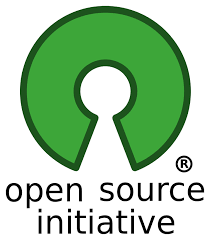Every so often I come across pages on the web that sparks an interest and further research. After a couple of months of running Shift+Backspace, a website with a focus on free and open-source software (commonly referred as FOSS), I figured it was time to share the definition of open-source for the general reader. Now, I do realize that there are many different licenses such as Creative Commons Attribution, GNU GPL, GPL 2, the forthcoming GPL 3 and many other, but this article is simply a generalization from the simple definition on The Open Source Initiative (OSI) website.

What exactly does the OSI do for open-source? Here is a short blurb from their website about who they are and what OSI sets out to do:
The Open Source Initiative (OSI) is a non-profit corporation formed to educate about and advocate for the benefits of open source and to build bridges among different constituencies in the open-source community.
One of our most important activities is as a standards body, maintaining the Open Source Definition for the good of the community. The OSI Certified Open Source Software certification mark and program creates a nexus of trust around which developers, users, corporations and governments can organize open-source cooperation.
Recently I ordered a few books about open-source software in hopes of furthering my education of the open-source community. It is my hopes that sometime in the near future I can become a part of the OSI and help spread the word of open-source and the good it provides not only to users but to the sharing of knowledge around the globe.
But what classifies a project as open-source? For this we must read the Open Source Definition (OSD). Below are the 10 official OSD criteria (from the OSI website here) projects must satisfy in order to be classified as officially open-source (yes, it’s more than just releasing the source code):
1. Free Redistribution
The license shall not restrict any party from selling or giving away the software as a component of an aggregate software distribution containing programs from several different sources. The license shall not require a royalty or other fee for such sale.
2. Source Code
The program must include source code, and must allow distribution in source code as well as compiled form. Where some form of a product is not distributed with source code, there must be a well-publicized means of obtaining the source code for no more than a reasonable reproduction cost preferably, downloading via the Internet without charge. The source code must be the preferred form in which a programmer would modify the program. Deliberately obfuscated source code is not allowed. Intermediate forms such as the output of a preprocessor or translator are not allowed.
3. Derived Works
The license must allow modifications and derived works, and must allow them to be distributed under the same terms as the license of the original software.
4. Integrity of The Author’s Source Code
The license may restrict source-code from being distributed in modified form only if the license allows the distribution of “patch files” with the source code for the purpose of modifying the program at build time. The license must explicitly permit distribution of software built from modified source code. The license may require derived works to carry a different name or version number from the original software.
5. No Discrimination Against Persons or Groups
The license must not discriminate against any person or group of persons.
6. No Discrimination Against Fields of Endeavor
The license must not restrict anyone from making use of the program in a specific field of endeavor. For example, it may not restrict the program from being used in a business, or from being used for genetic research.
7. Distribution of License
The rights attached to the program must apply to all to whom the program is redistributed without the need for execution of an additional license by those parties.
8. License Must Not Be Specific to a Product
The rights attached to the program must not depend on the program’s being part of a particular software distribution. If the program is extracted from that distribution and used or distributed within the terms of the program’s license, all parties to whom the program is redistributed should have the same rights as those that are granted in conjunction with the original software distribution.
9. License Must Not Restrict Other Software
The license must not place restrictions on other software that is distributed along with the licensed software. For example, the license must not insist that all other programs distributed on the same medium must be open-source software.
10. License Must Be Technology-Neutral
No provision of the license may be predicated on any individual technology or style of interface.
If you want clarification on any of these 10 criteria the OSI has provided an annoted version of the OSD here. Stating the obvious, open-source is something I am very passionate about. I am still in the early stages of my research and understanding of everything open-source but hope that with time I will become both an expert and advocate on the subject.
Time for some R&R,
Cole


Leave a Reply
You must be logged in to post a comment.